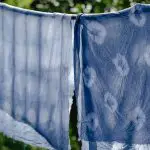Looking to keep those pesky weeds at bay under your rock landscaping? Wondering which fabric will do the best job? You've come to the right place.
In this guide, we'll explore the best weed barrier fabrics for use under rock, giving you the mastery you need to make an informed decision. From effectiveness and durability to installation and cost, we'll cover all the key factors to consider.
So, let's dive in and find out which fabric will help you maintain a pristine, weed-free rock garden.
Key Takeaways
- Consider fabric longevity and durability for a low-maintenance solution.
- Weigh the pros and cons of different fabric types to make an informed decision.
- Fabric permeability is crucial for preventing weed growth and ensuring proper airflow and water drainage.
- Proper installation techniques, such as using landscape staples and overlapping fabric edges, are important for effective weed control.
Types of Weed Barrier Fabrics
When choosing the best weed barrier fabric for under rock, you should consider the different types available. There are various options to choose from, each with its own advantages and disadvantages. Some fabrics are designed for short-term use, while others are engineered for long-lasting performance. The fabric longevity is an important factor to consider, especially if you want a low-maintenance solution that will last for years to come.
Installation methods also play a crucial role in determining the effectiveness of the weed barrier fabric. Some fabrics are easier to install than others, and the method of installation can impact how well the fabric performs over time. Understanding the different installation techniques can help you choose the right fabric for your specific needs.
It's essential to weigh the pros and cons of each type of weed barrier fabric to make an informed decision. Whether you prioritize fabric longevity, ease of installation, or other factors, knowing the differences between the types of weed barrier fabrics will help you select the best option for your landscaping project.
Effectiveness in Weed Prevention
When it comes to choosing the best weed barrier fabric for your rock landscaping, it's important to consider its effectiveness in preventing weed growth. Factors like fabric permeability and durability against weed penetration play a crucial role in determining how well the fabric will keep weeds at bay.
Understanding these points will help you make an informed decision about which fabric is the best choice for your landscaping needs.
Fabric Permeability and Weeds
Choosing a fabric with optimal permeability is essential for preventing weeds under rock, ensuring effective weed prevention.
Fabric permeability refers to the ability of the material to allow air and water to pass through while blocking weed growth. It's crucial to select a fabric that strikes the right balance, as poor permeability can lead to soil compaction, hindering plant growth, while excessive permeability may allow weeds to penetrate the barrier.
The fabric's ability to regulate moisture and air exchange is directly linked to its effectiveness in preventing weed growth. When the fabric allows for sufficient airflow and water drainage, it creates a healthy environment for desired plants while impeding weed development.
Durability Against Weed Penetration
To achieve effective weed prevention under rock, you need a fabric that offers strong durability against weed penetration. When evaluating the durability of weed barrier fabrics, consider the following factors to ensure effectiveness in weed prevention:
- Material Strength: Look for fabrics made from durable materials like polypropylene or polyester, which can withstand the pressure and penetration attempts from aggressive weeds.
- Thickness: Opt for a fabric with ample thickness as it provides an additional layer of protection against weed penetration, enhancing the overall effectiveness of the barrier.
- Tear Resistance: Choose a tear-resistant fabric to ensure that it can withstand any potential damage caused by rocks or other sharp objects, maintaining its integrity as a weed barrier.
- UV Stability: Select a fabric with UV stability to prolong its lifespan and maintain its weed barrier effectiveness, especially when exposed to sunlight over time.
Durability Comparison
You should compare the durability of each fabric to determine which is the best weed barrier under rock.
When comparing the durability of different fabrics for use as weed barriers under rock, it's important to consider fabric strength characteristics such as tear resistance, puncture resistance, and UV stability. A high-quality weed barrier fabric should be strong enough to withstand the pressure from rocks and prevent weed penetration for an extended period.
Durability comparison involves evaluating the fabric's ability to resist tears and punctures, as well as its capacity to endure outdoor conditions. Look for a fabric that's thick and sturdy, as this indicates better resistance to tears and punctures. Additionally, UV stability is crucial to ensure that the fabric can withstand prolonged exposure to sunlight without degrading.
Consider the weave of the fabric as well. A tightly woven fabric tends to be more durable and resistant to tears and punctures compared to loosely woven ones. When comparing weed barrier fabrics, opt for materials specifically designed for long-term durability and weed prevention under rock landscapes.
Installation Process and Considerations
When it comes to installing a weed barrier under rock, considering the fabric thickness options and proper anchoring techniques is crucial. These factors play a significant role in the long-term durability and effectiveness of the barrier.
Fabric Thickness Options
Consider choosing a fabric thickness that suits your specific landscape and weed control needs when installing a weed barrier under rock. The fabric weight plays a crucial role in its effectiveness and durability. Here's what to consider:
- Lightweight Fabric (2-3 oz/sq yd): Suitable for annual weed control and short-term landscaping projects. It offers basic weed suppression at a lower cost.
- Medium-weight Fabric (3-4 oz/sq yd): Ideal for perennial weed control and medium to long-term use. It provides better durability and weed resistance, making it suitable for various landscapes.
- Heavy-duty Fabric (4-6 oz/sq yd): Best for long-term weed control in high-traffic areas or under heavy rocks. It offers superior durability and weed suppression but comes at a higher cost.
- Extra Heavy-duty Fabric (6+ oz/sq yd): Reserved for industrial or extremely high-traffic areas where maximum weed control and durability are essential, albeit at a higher investment.
Choosing the right fabric weight involves a cost benefit analysis to ensure it aligns with your long-term landscaping goals.
Proper Anchoring Techniques
To properly anchor the weed barrier fabric under rock, utilize landscape staples to secure it in place. When installing the fabric, ensure that it is pulled taut and flat against the ground to prevent any bunching or folding that could compromise its effectiveness. Below is a table outlining some proper anchoring techniques to consider during the installation process:
| Anchoring Techniques | Description | Considerations |
|---|---|---|
| Landscape Staples | Secure fabric by driving staples into the ground | Use longer staples for better anchoring |
| Fabric Overlap | Overlap fabric edges by at least 6 inches | Prevents weed penetration through gaps |
| Securing Around Edges | Tuck fabric under existing landscaping or pavers | Provides a clean, finished appearance |
| Proper Maintenance | Regularly check fabric for tears or shifting | Repair any damage promptly to maintain effectiveness |
| Fabric Lifespan | Choose a durable, UV-resistant fabric for longevity | Quality fabric will last longer and require less maintenance |
Properly anchoring the weed barrier fabric under rock is crucial for its effectiveness and longevity. These techniques ensure that the fabric remains in place, providing optimal weed control and reducing the need for frequent maintenance.
Long-Term Durability Comparisons
For optimal long-term durability of the weed barrier fabric under rock, ensure proper installation techniques are followed, anchoring the fabric securely and using UV-resistant materials.
When comparing fabric quality, consider the thickness and strength of the material. Thicker fabrics generally offer better durability and weed resistance. Look for fabric with reinforced edges to prevent fraying over time.
Additionally, proper installation techniques include ensuring the fabric is laid flat and free from wrinkles, which can lead to premature degradation. Utilize landscape staples to secure the fabric in place, preventing shifting and exposure.
Lastly, consider using a fabric specifically designed for prolonged UV exposure, as this will prevent deterioration from sun exposure.
Cost Analysis of Different Fabrics
You can compare the cost of different fabrics for weed barrier under rock to make an informed decision. When considering the cost, it's crucial to factor in the fabric lifespan. While some fabrics may have a lower upfront cost, they might need to be replaced more frequently, leading to higher long-term expenses. On the other hand, investing in a higher-quality, more durable fabric initially could result in cost savings over time due to its longer lifespan and reduced need for replacement.
It's essential to analyze the cost of each fabric option over its expected lifespan to determine the most cost-effective choice. Consider the potential maintenance and replacement expenses associated with each fabric when calculating the overall cost. Additionally, take into account the specific requirements of your landscaping project, as certain fabrics may be more suitable based on factors such as climate, soil type, and the intended use of the area.
Environmental Impact of Weed Barrier Fabrics
Consider the environmental impact of weed barrier fabrics over their lifespan to understand their long-term effects on the ecosystem. When choosing a weed barrier fabric, it's crucial to consider its environmental impact and sustainability benefits. Here's what you need to know:
- Biodegradability: Some weed barrier fabrics are biodegradable, meaning they break down naturally over time, reducing long-term environmental impact.
- Chemical Treatments: Check if the fabric has been treated with harmful chemicals. Opt for fabrics that are free from toxic substances to minimize negative effects on the environment.
- Water Permeability: Choose fabrics that allow water and nutrients to penetrate the soil, promoting healthy growth for plants and minimizing disruption to the ecosystem.
- Longevity: Consider the durability of the fabric. Longer-lasting weed barriers may reduce the need for frequent replacements, leading to less overall environmental impact.
Maintenance Requirements
To maintain the effectiveness of the weed barrier fabric under rock, regularly inspect for tears or rips and promptly repair any damage. This simple maintenance tip can go a long way in preserving the integrity of the fabric and ensuring that it continues to effectively block out weeds.
In addition, it's important to keep an eye out for any signs of wear and tear, especially in high-traffic areas or where heavy rocks are placed.
Choosing the right fabric in the first place can also minimize the maintenance needed. When selecting a fabric, opt for a high-quality, durable material that's designed specifically for weed control. These fabrics are often UV-resistant and better equipped to withstand the outdoor elements, reducing the need for frequent replacements or repairs.
Best Practices for Choosing and Using Weed Barrier Fabric
Regularly inspecting the weed barrier fabric for tears or rips and promptly repairing any damage is crucial for maintaining its effectiveness under rock.
Here are some best practices for choosing and using weed barrier fabric:
- Select the Right Fabric: Choose a weed barrier fabric specifically designed for use under rock. Look for a durable, UV-resistant fabric with good permeability to allow for water and air movement while blocking out light to prevent weed growth.
- Proper Installation: Ensure the fabric is installed correctly by laying it down smoothly and overlapping the seams by at least 6 inches. Secure the edges with landscape staples to prevent shifting.
- Avoid Soil Contact: Keep the fabric from coming into direct contact with soil as this can lead to weed growth on top of the barrier.
- Regular Maintenance: Periodically inspect the fabric for any signs of damage, and remove any accumulated debris on the surface to prevent weed growth and maintain its effectiveness.
Frequently Asked Questions
Can Weed Barrier Fabrics Be Used in Areas With Heavy Foot Traffic?
Yes, weed barrier fabrics can withstand heavy foot traffic if installed properly. Durability is key, and proper installation ensures longevity. Pay attention to the fabric's thickness and material for the best performance in high-traffic areas.
Are There Any Specific Considerations for Using Weed Barrier Fabrics in Areas With Extreme Weather Conditions?
When considering weather durability, make sure the weed barrier fabric is UV-resistant and can withstand temperature fluctuations. Proper installation techniques, like securing the edges and minimizing overlaps, will enhance its effectiveness in extreme conditions.
How Do Different Weed Barrier Fabrics Compare in Terms of Preventing the Growth of Invasive or Aggressive Weed Species?
When comparing weed barrier fabrics, consider their effectiveness in preventing invasive weeds, cost, and durability. Some materials may be more expensive but offer better long-term results. Assessing these factors will help you make an informed decision.
Are There Any Specific Maintenance Requirements for Weed Barrier Fabrics in Areas With High Humidity or Moisture Levels?
In areas with high humidity or moisture levels, weed barrier fabrics may need more frequent maintenance. Heavy traffic can also impact their effectiveness. Regularly check for tears or degradation and consider using a thicker fabric for better durability.
What Are the Best Practices for Disposing of or Recycling Weed Barrier Fabrics at the End of Their Lifespan?
When it comes to disposing of weed barrier fabrics, you have a few options. Some local waste management facilities may accept them for recycling, or you can check for specialized recycling programs in your area.
- What Is Pochampally Ikat? a Journey to India’s Silk City - June 27, 2025
- What Is Pochampally Ikat? a Journey to India’s Silk City - June 27, 2025
- What Is Pochampally Ikat? a Journey to India’s Silk City - June 27, 2025







